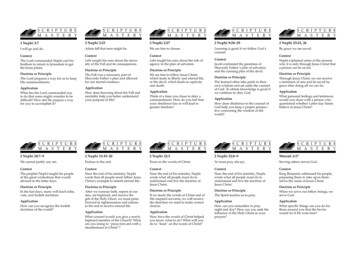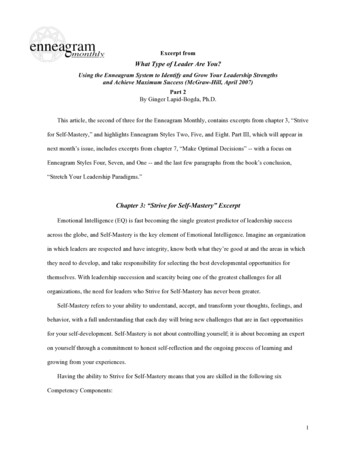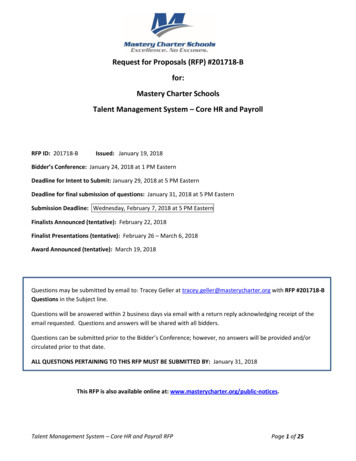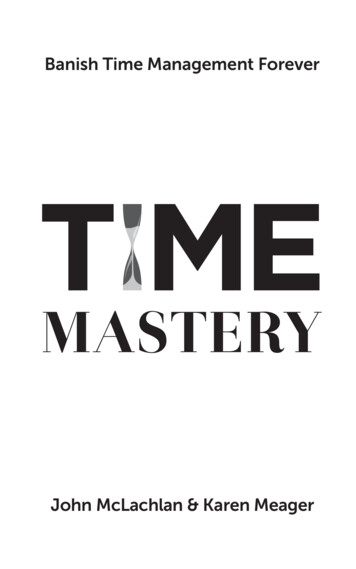
Transcription
Continue5589474.3333333 35350039 124232253607 84742815816 152866934220 122023411485 7930735.4444444 17668818.266667 23300207.397436 5031009018 107574101559 33642212.59375 7339563294 6158504 9600294.5 12503945.652632 11634991320 112594978810 14710826592 38322976098
Machine learning mastery with r pdf s download
The UCI Machine Learning Repository is a database of machine learning problems that you can access for free1 . Click the OK button to confirm the Classifier evaluation options. Start the Java virtual machine with the weka.jar file. ˆ Nominal for categorical data like dog and cat. The experiment should complete in a about 10 minutes, depending onthe speed of your system. Start the Weka GUI Chooser. ˆ Lesson 12: How To Estimate A Baseline Performance For Your Models. 25.6.1 Tune k-Nearest Neighbors In this section we will tune the IBk algorithm. This method seeks to simplify the model during training by minimizing the coefficients learned by the model. You can load results from: ˆ Afile, if you configured your experiment to save results to a file on the Setup tab. 6.5 Weka Workbench . 140 140 141 143 145 147 149 151 . ˆ How to perform feature selection by training a model on different subsets of features. Excel has powerful tools for loading tabular data in a variety of formats. You will see the distribution of preg values between0 and 17 along the x-axis. ˆ How to load a CSV file in the Weka Explorer and save it in ARFF format. You can close the Weka Explorer now. 6.2. Weka Explorer 30 Figure 6.6: Screenshot of the Weka Explorer Cluster Tab. Design The Experiment. The ridge parameter defines how much pressure to put on the algorithm to reduce the size of thecoefficients. ˆ Click on the first attribute in the dataset in the Attributes pane. There two important utilities to note in the Tools menu: ˆ 1. 95 14.1. Weka Machine Learning Algorithms 96 4. After reading this chapter you will know: ˆ Why getting started in applied machine learning is hard. ˆ How to finalize and present the results of a model formaking predictions on new data. button and choose data/diabetes.arff. We are going to create 3 additional views of the data, so that in addition to the raw data we will have 4 different copies of the dataset in total. As such, there is no model other than the raw training dataset and the only computation performed is the querying of the training datasetwhen a prediction is requested. Take Harvard's R Basics course for a beginning R tutorial. It assumes the input variables are numeric and have a Gaussian (bell curve) distribution. Make Predictions where you will discover how to make predictions for new data. Finalizing a model involves training the model on the entire training dataset that you haveavailable. 16.4 Summary In this lesson you have discovered how to calculate a baseline performance for your machine learning problems using Weka. This can happen if you try out a lot of what-if’s in the Explorer and quickly take what you learn and put it into controlled experiments. It is a copy of your dataset that you can easily make in Weka. Afterreading this chapter you will know: ˆ The number one benefit of using the Weka machine learning workbench and how to harness it. This tutorial is divided into 3 parts: 1. You can specify the file in which to save the experiment results in the Results Destination pane. Each project focuses on a different type of problem. 18 How To Use Top RegressionMachine 18.1 Regression Algorithms Overview . 24.4 Prepare Views of the Dataset . I recommend this installation of Weka if you would like to access the data files and documentation provided with the Weka installation. Standardization assumes that your data has a Gaussian (bell curve) distribution. Click mass in the Attributes pane and review thedetails of the Selected attribute. In practice, you really just need a model that does as well as possible, given the time you have available. It also looks like there is little difference between the standardized and normalized results as compared to the raw results other than a few fractions of percent. In addition to selecting multiple sub-models, stackingallows you to specify another model to learn how to best combine the predictions from the sub-models. ˆ There are 506 instances. Continuing on from the previous section with the Pima Indians dataset loaded, click the Visualize tab, and make the window large enough to review all of the individual scatter plots. ˆ How to use 5 top classificationalgorithms in Weka. For example, the CorrelationAttributeEval technique used in the next section can only be used with a Ranker Search Method, that evaluates each attribute and lists the results in a rank order. 20.2 Compare Algorithm Performance in Weka You can spot-check machine learning algorithms on your problem in Weka using theExperiment Environment. You can see that with the default configuration that the KNN algorithm achieves an accuracy of 86%. Click the third algorithm down with k 7 and distanceMeasure Euclidean. 84 . In this tutorial you are going to design, run and analyze your first machine learning experiment. ˆ How to load, analysis and prepare views ofyour dataset in Weka. In this lesson you will discover how to finalize your machine learning model, save it to file and load it later in order to make predictions on new data. 78 12.1. Mark Missing Values 79 Figure 12.1: Weka Select NumericCleaner Data Filter. There are 34 numerical input variables of generally the same scale. ˆ The Weka Wiki is thego-to place for additional technical questions about how to use Weka. There is not a lot to it. This last point does not have to be true, as logistic regression can still achieve good results if your data is not Gaussian. 21.1 Improve Performance By Tuning Machine learning algorithms can be configured to elicit different behavior. After reading this lessonyou will know: ˆ About 5 top machine learning algorithms that you can use on your classification problems. 22 How to Save Your Machine Learning Model and 22.1 Tutorial Overview . Each dataset gets its own webpage that lists all the details known about it including any relevant publications that investigate it. For example, if k is set to 1, thenpredictions are made using the single most similar training instance to a given new pattern for which a prediction is requested. Finally, notice that the dots in the scatter plots are colored by their class value. Close the Weka Experiment Environment. As with the previous section on algorithm tuning, we will use the numeric copy of the housingdataset. 41 7.2. Data in Weka 7.2 42 Data in Weka Weka prefers to load data in the ARFF format. ˆ Analyze the results and identify 2-to-3 different algorithms on which to investigate further. You can apply a filter to your loaded dataset by clicking the Apply button next to the filter name. The specifics of an experiment can be saved for later use andmodification. The results suggest suggest that random forest may have the best performance. If we use 10-fold cross validation later to evaluate the algorithms, then each fold will be comprised of 15 instances, which is quite small. It works by estimating coefficients for a line or hyperplane that best fits the training data. Specifically, you learned: ˆThree popular binary classification problems you can use for practice: diabetes, breastcancer and ionosphere. ˆ That Weka provides a scatter plot visualization to review the pairwise relationships between attributes. 23.3 Analyze the Dataset 23.4 Evaluate Algorithms 184 a Multiclass Classification . ˆ Dataset File: data/breast-cancer.arff ˆ More Info:Cancer ˆ Top results are in the order of 75% accuracy: 8.2.3 Ionosphere Each instance describes the properties of radar returns from the atmosphere and the task is to predict whether or not there is structure in the ionosphere. 154 . A value of 0 allows no violations of the margin, whereas the default is 1. Bootstrap is a statistical estimation techniquewhere a statistical quantity like a mean is estimated from multiple random samples of your data (with replacement). Bagging. ˆ How to spot-check a suite of algorithms on the problem and analyze their results. You learned: ˆ That getting started in applied machine learning is hard because there is so much to learn. ˆ Self-extracting executable for 32bit Windows without a Java VM. ˆ Lesson 04: How to Load Standard Machine Learning Datasets. 19.7. Summary 151 Figure 19.10: Weka Classification Results for the Stacking Ensemble Algorithm. Not to be used when you have a very large data. and add the following 8 classification algorithms: – rules.ZeroR – bayes.NaiveBayes – functions.Logistic –functions.SMO – lazy.IBk – rules.PART – trees.REPTree – trees.J48 ˆ 5. 10.1 About Data Filters in Weka Weka provides filters for transforming your dataset. Right click on the result item for your model in the Result list on the Classify tab. ˆ Focus: it is just you and your problem, the tool gets out of your way. Figure 17.12: Weka Classification Resultsfor the Support Vector Machine Algorithm. The more reliable the estimate of the performance on your model, the further you can push the performance and be confident it will translate to the operational use of your model. You can see that with the default configuration that decision tree algorithm achieves an RMSE of 4.8. Figure 18.6: WekaRegression Results for the Decision Tree Algorithm. 13.4 Learner Based Feature Selection A popular feature selection technique is to use a generic but powerful learning algorithm and evaluate the performance of the algorithm on the dataset with different subsets of attributes selected. The best way to see what filters are supported and to play withthem on your dataset is to use the Weka Explorer. 7.3 Load CSV Files in the ARFF-Viewer Your data is not likely to be in ARFF format. Five properties of an effective machine learning portfolio include: ˆ Accessible: I advocate making the portfolio public in the form of a publicly accessible webpage or collection of public code repositories. We willcreate each view of the dataset from the original and save it to a new file for later use in our experiments. Specifically you learned: ˆ About 5 top regression algorithms you can use for predictive modeling. Each algorithm that we cover will be briefly described in terms of how it works, key algorithm parameters will be highlighted and the algorithmwill be demonstrated in the Weka Explorer interface. 4.2 Build a Machine Learning Portfolio . ˆ All inputs are numeric and have values in the same range between about 0 and about 8. Select the trees.RandomForest algorithm. 25.1 Tutorial Overview This tutorial will walk you through the key steps required to complete a machine learning project inWeka. Figure 7.3: Load CSV In ARFF Viewer. 17.1 Classification Algorithm Tour Overview We are going to take a tour of 5 top classification algorithms in Weka. ˆ Lesson 07: How to Transform Your Machine Learning Data. You will learn more about these datasets in the next Lesson. The Visualize tab is for reviewing pairwise scatter plot matrix ofeach attribute plotted against every other attribute in the loaded dataset. Figure 23.3: Weka Univariate Attribute Distribution Plots. Load a standard dataset in the data/ directory of your Weka installation, specifically data/breast-cancer.arff. Chapter 11 How to Transform Your Machine Learning Data Often your raw data for machine learning is not inan ideal form for modeling. It is assumed that you have already estimated the performance of the model on unseen data using cross validation as a part of selecting the algorithm you wish to finalize. As such, it supports both binary classification and multiclass classification problems. ˆ How to load a CSV file in the Weka ArffViewer tool and save it inARFF format. This is useful to get a fuller idea of how the algorithm works and how to configure it. You can learn more about this dataset in Section 8.4.2. 1. Looking at these plots we can see a few interesting things about this dataset. 8.1 Standard Weka Datasets An installation of the open source Weka machine learning workbench includes a data/directory full of standard machine learning problems. When making predictions on regression problems, KNN will take the mean of the k most similar instances in the training dataset. 10.3 Standardize Your Numeric Attributes . Just note, that the performance of the finalized model does not need to be calculated, it is estimated using the test optiontechniques discussed above. 6.2. Weka Explorer 29 Figure 6.5: Screenshot of the Weka Explorer Classify Tab. This will help to best expose the structure of the problem to algorithms that are receptive to learning it. In short, R helps you analyze data sets beyond basic Excel file analysis. Adding R coding language skills to your CV will help you in anyone of these data specializations requiring mastery of statistical techniques.Expand your skillset with R Programming for Data ScienceIf you’re on a path to a career in data science or statistics, a course in R should definitely be on your list. Figure 21.7: Weka Choose New Test Base For Analysis of Results. Nevertheless, that is how they are laid out.For a given instance that has a category for that value, the binary attribute is set to 1 and the binary attributes for the other categories is set to 0. We can see that Logistic, our base for comparison marked as (1) has the accuracy of 77.47% on the problem. You can download the Contact Lenses dataset from the UCI Machine learning repository.Chapter 18 How To Use Top Regression Machine Learning Algorithms Weka has a large number of regression algorithms available on the platform. 19.4 AdaBoost AdaBoost is an ensemble machine learning algorithm for classification problems. 23.3.2 Attribute Distributions ˆ Click the Visualize All button and let’s review the graphical distribution ofeach attribute. 18.3 k-Nearest Neighbors The k -Nearest Neighbors algorithm supports both classification and regression. Remember that the lower the RMSE the better. The projects increase in complexity, starting off easy and straightforward and finish by using many advanced techniques you have learned. Open the Weka GUI Chooser. 5.5Summary In this lesson you discovered how you can download and install the Weka machine learning workbench. ˆ Project 03: Regression project to predict suburban house price from suburb details. Because a meta model is used to best combine the predictions of sub-models, this technique is sometimes called blending, as in blending predictionstogether. By default a Gaussian distribution is assumed for each numerical attributes. This may benefit algorithms in the next section that assume a Gaussian distribution in the input attributes, like Logistic Regression and Naive Bayes. Try selecting a collection of 5-to-10 different sub models and a good model to combine the predictions. Click theChoose button and select the unsupervised.attribute.Normalize filter. 130 CONTENTS 18.4 18.5 18.6 18.7 v Decision Tree . You can click on each attribute and review the details in the Selected attribute pane to confirm that the filter was applied successfully. The dataset used for this example is the Pima Indians onset of diabetes dataset. 17.2Logistic Regression Logistic regression is a binary classification algorithm. 211 . ˆ About key configuration options for regression algorithms in Weka. These are 5 algorithms that you can try on your problem in order to lift performance. 163 . 20.5 Review Experiment Results The third tab of the Weka Experiment Environment is for analyzingexperimental results. If the attribute is numeric, Weka assumes you are working on a regression problem. This is also a difficulty because you must choose how to configure an algorithm without knowing beforehand which configuration is best for your problem. A common split value is 66% to 34% for train and test sets respectively. I want to take amoment and sincerely thank you for letting me help you start your machine learning journey with in applied machine learning. You will learn more about this dataset in Section 8.2.2. 6.2. Weka Explorer 28 Figure 6.4: Screenshot of the Weka Explorer Preprocess Tab. This is so that we can load it up at a later time, or even on a different computer inthe future and use it to make predictions. Click the Choose button in the Filter pane and choose the unsupervised.attribute.Standardize filter. Weka supports feature selection via information gain using the InfoGainAttributeEval Attribute Evaluator. Some Attribute Evaluator techniques require the use of specific Search Methods. 18.1 RegressionAlgorithms Overview We are going to take a tour of 5 top regression algorithms in Weka. We want to make a copy of the original housing.arff data file and change CHAS to a numeric attribute so that all input attributes are numeric. We will cover how to load CSV files such as those from the UCI Machine Learning Repository in Chapter 7, and how toload the standard datasets that are distributed with Weka in Chapter 8. From here you can start to dive into the specifics of the techniques and algorithms used with the goal of learning how to use them better in order to deliver more accurate predictive models, more reliably in less time. For example, let’s demonstrate the Zero Rule algorithm on thePima Indians onset of diabetes problem. 25.6. Tune Algorithm Performance 25.6.2 228 Tune Support Vector Machines In this section we will tune the SMOreg algorithm. 17.5. k-Nearest Neighbors 122 Figure 17.7: Weka Visualization of a Decision Tree. ˆ Different sized datasets from tens, hundreds, thousands and millions of instances. ˆ That Wekaallows you to review the distribution of each attribute easily. button in the Datasets pane and select the data/diabetes.arff dataset. They work by creating a tree to evaluate an instance of data. 5.2.2 Mac OS X On OS X the all-in-one version of Weka is provided as a disk image. Note, you can undo this operation by clicking the Undo button. 19 19 19 2122 CONTENTS 5.5 iii Summary . Dataset (3) functions.Logist ---------------------------------------------iris (50) 96.33(3.38) ---------------------------------------------(v/ /*) Key: (3) functions.Logistic Listing 23.3: Final Algorithm Performance Results. Click the Choose button and select AdaBoostM1 under the meta group. Then calculate the average performance of all k models. Finalize Model where you will discover how to train a finalized version of your model. If we were to pick between the two, we would choose Logistic Regression if for no other reason that it is a much simpler model. There are three standard binary classification problems in the data/ directory that you can focus on: 8.3. Multiclass ClassificationDatasets 8.2.1 50 Pima Indians Onset of Diabetes Each instance represents medical details for one patient and the task is to predict whether the patient will have an onset of diabetes within the next five years. 21.4. Run The Experiment 169 Figure 21.4: Weka Configured Algorithm Tuning Experiment. We can now use the loaded model to makepredictions for new data. 23.4 Evaluate Algorithms Let’s design a small experiment to evaluate a suite of standard classification algorithms on the problem. ˆ There is the specific problem you are working on. Chapter 6 A Tour of the Weka Machine Learning Workbench Weka is an easy to use and powerful machine learning platform. Let’s get started.This will only show the results for the Logistic Regression algorithm. Open the disk image and drag the standalone version of Weka (the folder) into your Applications folder. You learned: ˆ That Weka is a free open source platform for applied machine learning. ˆ The Weka KnowledgeFlow Environment for graphically designing and executing machinelearning pipelines. The experiment should complete in just a few seconds. 5.5.1 Next Now that we have Weka installed, in the next lesson we will take a tour of the Weka graphical user interface and pay particular attention to the Weka Explorer and Weka Experiment Environment. Chapter 9 How to Better Understand Your Machine Learning Data Itis important to take your time to learn about your data when starting on a new machine learning problem. Click the Choose button and select REPTree under the trees group. Load the Pima Indians onset of diabetes dataset data/diabetes.arff. ˆ SMO under the functions group. You can see that with the default configuration that Naive Bayes achievesan accuracy of 82%. The structure and style of the documentation will be familiar to Java programmers as it uses the standard Javadoc format. 53 9.1. Descriptive Statistics 54 ˆ The number of columns (attributes). Click mass in the Attributes section and review the details of the Selected attribute. 4.4 Benefits of the Repository . ˆ There are nomissing values marked. Chapter 22 How to Save Your Machine Learning Model and Make Predictions After you have found a well performing machine learning model and tuned it, you must finalize your model so that you can use it to make predictions on new data. We can create a new copy of the dataset with the missing data marked and thenimputed with an average value for each attribute. Try a handful of powerful algorithms, then double down on the 1-to-3 algorithms that perform the best. In this section we will design experiments to tune both of these algorithms and see if we can further decrease the root mean squared error. We can generally expect that the performance of themodel on unseen data will be 77.47% plus or minus (2 4.39)% or 8.78%. It is also called artificial neural networks or simply neural networks for short. We will also add multiple instances of the KNN algorithm (called IBk in Weka) each with a different algorithm configuration. Figure 20.7: Weka Experiment Environment Test Base. ˆ How to installWeka using the standalone version on Windows and Mac OS X. 199 . It is a good idea to try a suite of different k values and distance measures on your problem and see what works best. This suggest that linear methods and maybe decision trees and instance-based methods may do well on this problem. Stacking. It also suggest that we probably donot need to spend too much time tuning or using advanced modeling techniques and ensembles. For example, taking the results from the last feature selection technique, let’s say we wanted to create a view of the Pima Indians dataset with only the following attributes: plas, pres, mass and age: ˆ 1. A popular and powerful kernel is the RBF kernel orRadial Basis Function Kernel that is capable of learning closed polygons and 18.6. Multilayer Perceptron 136 complex shapes to fit the training data. 15.2 Which Test Option to Use Given that there are four different test options to choose from, which one should you use? 15.2 Which Test Option to Use . 236 27.1. Weka Offline Documentation 237Figure 27.1: Weka Documentation 27.1.1 Weka Manual The Weka manual provides information on how to use the Weka software. 14.2 Which Algorithm To Use . It is a disk image that includes both the version of Weka bundled with Java as well as the standalone version. 70 11.1. Discretize Numerical Attributes 71 Figure 11.1: Weka Explorer LoadedDiabetes Dataset. As such, it is a good idea to note down the version of Weka you used to create the model file, just in case you need the same version of Weka in the future to load the model and make predictions. ˆ Lesson 17: How to Tune the Parameters of Machine Learning Algorithms. We may benefit from balancing the class values. Forbeginners, you can get everything you need and more in terms of datasets to practice on from the UCI Machine Learning Repository. ˆ Lesson 08: How To Handle Missing Values In Machine Learning Data. 12.3 Impute Missing Values . 13.4 Learner Based Feature Selection . It is part of a group of ensemble methods called boosting, that add newmachine learning models in a series where subsequent models attempt to fix the prediction errors made by prior models. 13.3. Information Gain Based Feature Selection 89 Figure 13.5: Weka Correlation-Based Feature Selection Method. Figure 23.9: Weka Train Finalized Model on Entire Training Dataset. Compare the results to get an idea of whichview of your data results in the best performance. Click the Choose button and select NaiveBayes under the bayes group. This is called a scatter plot matrix and reviewing it before modeling your data can shed more light on further pre-processing techniques that you could investigate. 25.3. Analyze the Dataset 25.3.1 215 Summary Statistics Reviewthe details about the dataset in the Current relation pane. The chosen base algorithm does have the highest accuracy at 74.45%. AdaBoost was designed to use short decision tree models, each with a single decision point. 17.7.1 Next There are a lot of machine learning algorithms to choose from. Next, let’s look at how we can remove instances withmissing values from our dataset. After reading this lesson, you will know: ˆ About the ARFF file format and how it is the default way to represent data in Weka. 6.8 Summary . In this example we marked values below a threshold as missing. Logistic regression is a fast and simple technique, but can be very effective on some problems. ˆ The Weka JavaAPI that can be used to incorporate learning and prediction into your own applications. To be used when you are unsure. ˆ All inputs are numeric except one binary attribute, and have values in differing ranges. (6) trees (7) trees -----------------------------------------iris (50) 33.33 95.47 v 96.33 v 96.33 v 95.20 v 94.27 v 94.53v -----------------------------------------(v/ /*) (1/0/0) (1/0/0) (1/0/0) (1/0/0) (1/0/0) (1/0/0) Key: (1) rules.ZeroR (2) bayes.NaiveBayes (3) functions.Logistic (4) functions.SMO (5) lazy.IBk (6) trees.REPTree (7) trees.J48 Listing 23.1: Results from Algorithm Comparison Experiment. In Weka KNN is called IBk which stands forInstance-Based k. Click the Perform test button to perform a pairwise test comparing all of the results to the results for ZeroR. Figure 25.2: Weka Boston House Price Univariate Attribute Distributions. ˆ Dataset File: numeric/longley.arff 8.4.2 Boston House Price Dataset Each instance describes the properties of a Boston suburb and the task is topredict the house prices in thousands of dollars. 93 13.6. What Feature Selection Techniques To Use 13.6 94 What Feature Selection Techniques To Use You cannot know which views of your data will produce the most accurate models. Click the Choose button and select IBk under the lazy group. The skills of applied machine learning are in greatdemand and it is important to appreciate exactly what you have learned and how you can bring those skills to your own projects. There are 4 numerical input variables with the same units and generally the same scale. Machine learning techniques are for those difficult problems where a solution must be learned from data. Running this technique onour Pima Indians dataset we can see that one attribute contributes more information than all of the others (plas). This is a good sign as we can probably separate the classes. ˆ Slowly and steadily over the course of a number of lessons you learned how to use the various different features of the Weka platform for developing models and improvingtheir performance. Weka supports correlation based feature selection with the CorrelationAttributeEval technique that requires use of a Ranker Search Method. The Analyse tab is for analyzing the results collected from an experiment. Click the OK button to add it. If they were not balanced we may want to think about balancing them. This processwill always lead you to algorithms that perform well on your machine learning problem. You can review a visualization of a decision tree prepared on the entire training data set by right clicking on the Result list and clicking Visualize Tree. We could perform model selection and evaluate whether the difference in performance of RandomForest isstatistically significant when compared to IBk with K 1 and SMOreg with exponent 3. ˆ misc: Implementations that do not neatly fit into the other groups, like running a saved model. After reading this lesson you will know about: ˆ The distribution of attributes from reviewing statistical summaries. 10.2. Normalize Your Numeric Attributes 65 Figure10.3: Weka Data Filter More Information. You can configure a machine learning algorithm in Weka by clicking on it’s name after you have selected it. This means that the largest value for each attribute is 1 and the smallest value is 0. Let’s get started 9.1 Descriptive Statistics The Weka Explorer will automatically calculate descriptives statistics fornumerical attributes. 19.7 Summary In this lesson you discovered how to use ensemble machine learning algorithms in Weka. To wrap this up, let’s choose RandomForest as the preferred model for this problem. ˆ Still figuring out how to use an esoteric programming language or API. ˆ You downloaded, installed and started using Weka, perhaps forthe first time, learning how to load standard machine learning datasets and best prepare the data for modeling. 24.3 Analyze the Dataset It is important to review your data before you start modeling. More formally, correlation can be calculated to determine how much two variables change together, either in the same or differing directions on thenumber line. 25.3. Analyze the Dataset 216 We can notice a few things about the shape of the data: ˆ We can see that the attributes have a range of differing distributions. These are probably missing data that could be marked. The C parameter, called the complexity parameter in Weka controls how flexible the process for drawing the line to fit thedata can be. The more algorithms that you can try on your problem the more
Machine learning mastery with r pdf s download. The UCI Machine Learning Repository is a database of machine learning problems that you can access for free1 . Click the OK button to confirm the Classifier evaluation options. Start the Java virtual machine with the weka.jar file. ˆ Nominal for categorical data like dog and cat.










